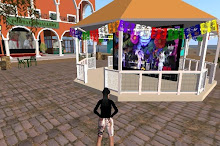 "In the brief years since the appearance of the first museum Web sites, most museums have established some presence on the World Wide Web. Museums have much to learn from each other, and from developers using the Web for other applications. To facilitate this exchange of information, Archives & Museum Informatics organises an annual international conference devoted exclusively to Museums and the Web."
"In the brief years since the appearance of the first museum Web sites, most museums have established some presence on the World Wide Web. Museums have much to learn from each other, and from developers using the Web for other applications. To facilitate this exchange of information, Archives & Museum Informatics organises an annual international conference devoted exclusively to Museums and the Web."Read what Glenda Sims had to say about this year's conference in her original Oz blog! Check out all the new features being explored by museums such as blogs...(yes, bloggin!), social tagging and more.

Also, check out the features that the Los Angeles Getty Museum was able to showcase in one of their online exhibits (follow the link below). While navigating through the works of sculpture by Jean-Antoine Houdon you can not only zoom in and out to get incredibly close views of the marble, but you can also spin the sculpture around and see it from all sides! All it takes is a couple quick clicks of the mouse!
http://www.getty.edu/art/exhibitions/houdon/











